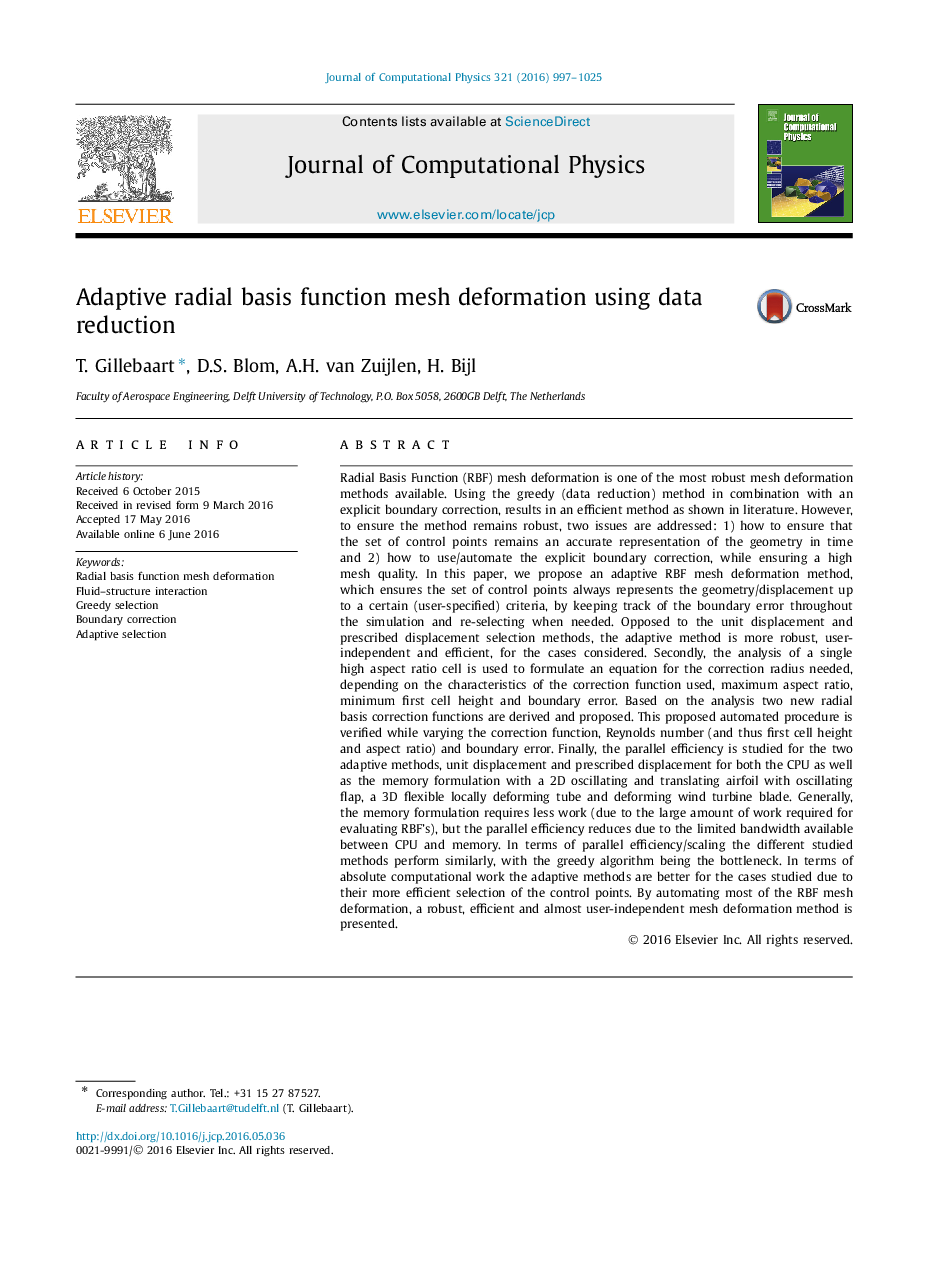| کد مقاله | کد نشریه | سال انتشار | مقاله انگلیسی | نسخه تمام متن |
|---|---|---|---|---|
| 6929862 | 867531 | 2016 | 29 صفحه PDF | دانلود رایگان |
عنوان انگلیسی مقاله ISI
Adaptive radial basis function mesh deformation using data reduction
ترجمه فارسی عنوان
تغییر شکل بافت تابع شعاعی سازگار با استفاده از کاهش داده ها
دانلود مقاله + سفارش ترجمه
دانلود مقاله ISI انگلیسی
رایگان برای ایرانیان
کلمات کلیدی
موضوعات مرتبط
مهندسی و علوم پایه
مهندسی کامپیوتر
نرم افزارهای علوم کامپیوتر
چکیده انگلیسی
Radial Basis Function (RBF) mesh deformation is one of the most robust mesh deformation methods available. Using the greedy (data reduction) method in combination with an explicit boundary correction, results in an efficient method as shown in literature. However, to ensure the method remains robust, two issues are addressed: 1) how to ensure that the set of control points remains an accurate representation of the geometry in time and 2) how to use/automate the explicit boundary correction, while ensuring a high mesh quality. In this paper, we propose an adaptive RBF mesh deformation method, which ensures the set of control points always represents the geometry/displacement up to a certain (user-specified) criteria, by keeping track of the boundary error throughout the simulation and re-selecting when needed. Opposed to the unit displacement and prescribed displacement selection methods, the adaptive method is more robust, user-independent and efficient, for the cases considered. Secondly, the analysis of a single high aspect ratio cell is used to formulate an equation for the correction radius needed, depending on the characteristics of the correction function used, maximum aspect ratio, minimum first cell height and boundary error. Based on the analysis two new radial basis correction functions are derived and proposed. This proposed automated procedure is verified while varying the correction function, Reynolds number (and thus first cell height and aspect ratio) and boundary error. Finally, the parallel efficiency is studied for the two adaptive methods, unit displacement and prescribed displacement for both the CPU as well as the memory formulation with a 2D oscillating and translating airfoil with oscillating flap, a 3D flexible locally deforming tube and deforming wind turbine blade. Generally, the memory formulation requires less work (due to the large amount of work required for evaluating RBF's), but the parallel efficiency reduces due to the limited bandwidth available between CPU and memory. In terms of parallel efficiency/scaling the different studied methods perform similarly, with the greedy algorithm being the bottleneck. In terms of absolute computational work the adaptive methods are better for the cases studied due to their more efficient selection of the control points. By automating most of the RBF mesh deformation, a robust, efficient and almost user-independent mesh deformation method is presented.
ناشر
Database: Elsevier - ScienceDirect (ساینس دایرکت)
Journal: Journal of Computational Physics - Volume 321, 15 September 2016, Pages 997-1025
Journal: Journal of Computational Physics - Volume 321, 15 September 2016, Pages 997-1025
نویسندگان
T. Gillebaart, D.S. Blom, A.H. van Zuijlen, H. Bijl,
